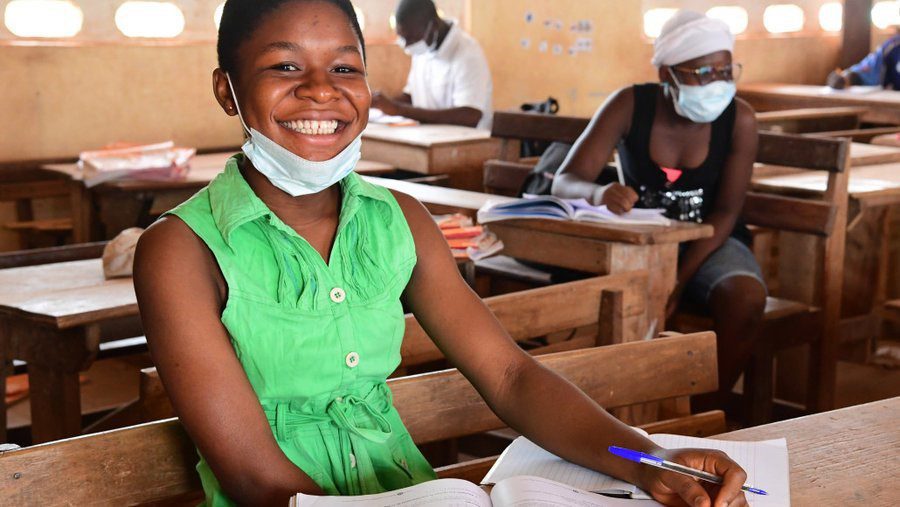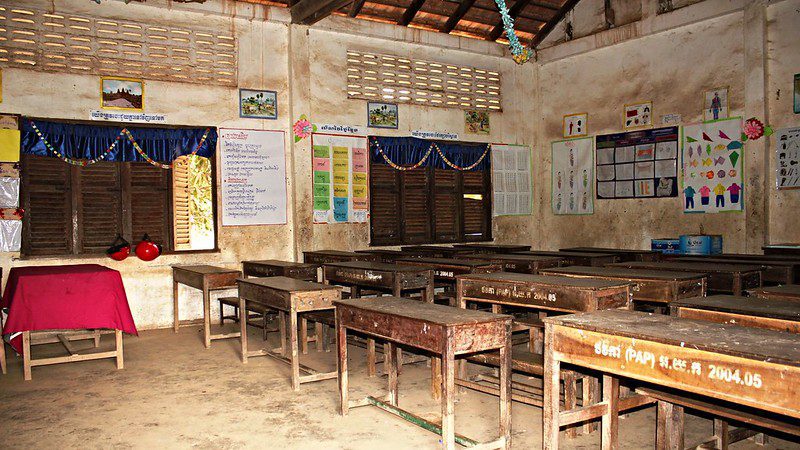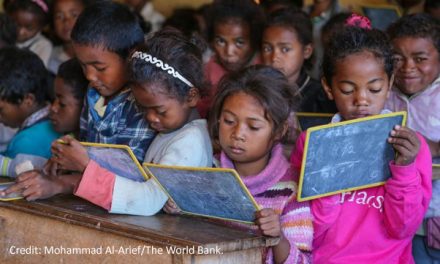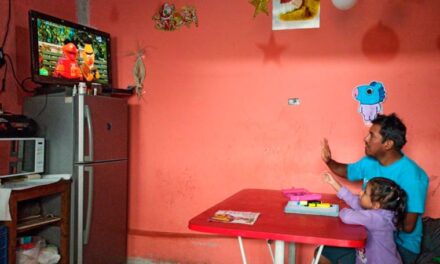This blog was written by Robert Jenkins, Chief, Education and Associate Director, Programme Division, UNICEF, and Rebecca Winthrop, Co-Director, Centre for Universal Education and Senior Fellow, Global Economy and Development, Brookings Institution. The blog was originally published on the Brookings Education Plus Development website on 15 May 2020.
The past two decades have been marked by outstanding gains in girls’ education worldwide, with the number of girls out of school dropping by 79 million. We cannot risk rolling back this progress. For some children, the impact of COVID-19 will be temporary. But for others, this pandemic will be devastating and will alter the course of their lives.
As we saw during the Ebola crisis, girls are particularly vulnerable when schools close for long periods of time. A recent report estimates that 10 million more secondary school-age girls could be out of school after this initial wave of the COVID-19 crisis has passed. Evidence shows that prolonged school closure can also result in increased sexual abuse and teenage pregnancies. Further, girls from the poorest communities are likely to miss out on remote learning strategies, either because access is limited or because the burden of care often falls on women.
Now, in the face of this pandemic, more than 70 percent of students around the world are still affected by nationwide school closures—or more than 1.26 billion children and youth. While we are just beginning to understand the socioeconomic impact, experiences from Ebola show us that girls will be among the hardest hit.
For many adolescent girls, especially those from low-income countries and the poorest communities, access to education was already a challenge even before COVID-19. A recent UNICEF report shows that nearly one in three adolescent girls from the poorest households around the world have never been to school, and estimates show that only 25 percent of the poorest girls in low-income countries complete primary school. Emergencies exacerbate preexisting inequalities and intensify the existing learning crisis.
Together, this data and lessons learned from our past experience tell us that we’ll need to do more than simply reopen classrooms to make it possible for the poorest and most marginalized girls to return to school. We have a once-in-a-lifetime chance to transform education and reimagine the way students learn, so that when schools reopen, they are more gender-responsive and inclusive, help all students to learn, look after all students’ health and well-being, and are digitally connected.
Drawing on existing evidence, including the “What Works in Girls’ Education” Brookings book, and on-the-ground know-how, we recommend governments and their partners take the following five steps to ensure marginalized girls, alongside boys, can continue their education.
- Lift financial barriers that prevent girls from going to school and that are likely to increase as a result of COVID-19 economic impacts.
The pandemic is hitting poorer families the hardest. A recent study in Kenya revealed that 68 percent of respondents had skipped a meal or eaten less as a direct result of COVID-19. The economic impact on families and communities leaves adolescent girls at higher risk of child marriage, sexual exploitation, and child labor. Waiving school and examination fees could facilitate girls’ return to school. Other strategies, such as cash transfers for the most marginalized girls, have also proven effective. Following Ebola, the Sierra Leone government waived tuition and examination fees for all learners for two academic years to motivate parents and caregivers to send children back to school. Additionally, in Ghana, keeping girls safe and learning is a priority during school closures. The Ministry of Gender, Children, and Social Protection will increase cash transfers under the Livelihood Empowerment Against Poverty (LEAP) Program for extremely poor households across Ghana, facilitating girls’ return to school in communities hard hit by the economic impact of COVID-19.
- Scale gender-responsive distance education to reach the most marginalized girls.
Distance learning strategies are essential during and after COVID-19, especially for the most marginalized girls and boys. While a recent Brookings report shows that currently 90 percent of high-income countries are using remote learning strategies to continue education, only 25 percent of low-income countries are doing so—and then largely through television and radio. There is an opportunity for countries to transform how they reach out-of-school girls and boys, even after the pandemic is over, by designing and scaling remote learning programs using appropriate technology. But it will be essential for these programs to take a gender-focused lens. Marginalized girls have less access to technology, so the design and deployment will need to be especially sensitive to working with and for girls to address these gaps. Additionally, any safety and violence risks that could be posed by girls’ participation in remote learning must be identified and protection approaches incorporated, including digital safeguarding flows in tech platforms
For example, in Vietnam alone, nearly 44,000 schools from preprimary to upper secondary were closed to prevent COVID-19 spread, affecting more than 21 million children. In trying to reach every child with learning opportunities the government has seen evidence that income and geography continue to be barriers for distance education and that there is very limited data to show the differential effects of school closures on girls versus boys. UNICEF is working with the government to better understand gender differences in access and learning through distance education so that this pandemic becomes an opportunity for improving the gender-responsiveness of distance education at scale.
- Intensify community mobilization and support for girls’ education, including for pregnant girls and those who were out of school before the COVID-19 crisis.
Back-to-school campaigns must include targeted messages for communities and caregivers to actively engage them in supporting girls going back to school. Messages must be contextualized, culturally relevant, and effective at changing pervasive and harmful gender norms that hold girls back. Communities must monitor girls’ attendance once schools reopen, through school management committees and parent and teacher associations, and support their distance learning in the interim.
Ensuring that girls can access learning materials online and offline during school closures, and that families remain committed to girls’ education, is key. For example, in Guatemala, UNICEF is working with the government to support communities in remote areas with poor connectivity and no electricity by providing printed material, TV, and radio messaging, and GIFs via mobile phones that depict both boys and girls helping with domestic chores, and survivor-centered guidance for adults to provide psychosocial support to victims of gender-based violence. This large-scale campaign is accompanied by distribution of baskets that include basic groceries and gender-responsive learning activities.
In Sierra Leone, the COVID-19 crisis forced a reassessment of policies that excluded pregnant girls from attending school. Learning from this experience, Sierra Leone’s minister of basic and senior secondary education recently issued a new policy on “radical inclusion” and “comprehensive safety,” allowing pregnant girls and adolescent mothers to attend school, take exams, and learn safely once schools reopened.
- Prioritize girls’ safety and protection.
During the 2014–2016 Ebola epidemic, girls were disproportionately affected by gender-based violence, resulting in a spike in adolescent pregnancies and thousands of adolescent girls unable to complete their education. We have already seen that violence against women and girls has increased during COVID-19 lockdowns. Governments must prioritize measures to protect girls from gender-based violence, early marriage and pregnancy to facilitate their return to school. A couple of examples of rapid responses to keeping girls safe and learning come from Jordan and Cote d’Ivoire.
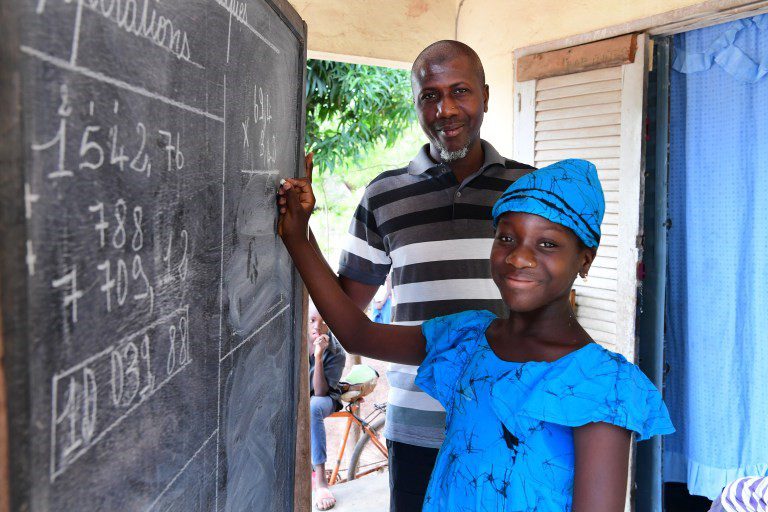
Fatimata Bagayogo, an 11-year-old girl, is studying at home during the coronavirus crisis, in Odienné, Côte d’Ivoire. As schools are closed, she’s attending classes on television and also practicing on a blackboard her father bought. Photo credit: UNICEF/Frank Dejongh.
The government of Jordan, in partnership with UNICEF and the U.K. government, has responded with a set of comprehensive policies including psychosocial support for girls through the nonformal education system, and teachers’ professional development in life skills education and effective ways to support victims of violence. More than 180,000 children have benefited from these programs so far. In Cote d’Ivoire, with support from UNICEF, the government launched a nationwide distance learning program, “Mon école à la maison,” or “My school at home.” Under this system, teachers, mothers’ groups, community health workers, and community leaders track how the pandemic is affecting students and families, and offer insights on who may need protection from gender-based violence, child marriage, early pregnancy, or other threats.
- Ensure meaningful participation for adolescent girls.
While we continue to highlight the disproportionate effects of COVID-19 on adolescent girls and young women, we must also recognize their creativity, innovative solutions, and effective partnership in shaping the response and recovery. Adolescent girls and boys can be agents of change in their communities, but for this to happen, the education system needs to intentionally ensure equity of voice and opportunity of participation for all adolescent girls. An education system that recognizes that girls’ voices are valuable and allows for their meaningful participation contributes towards girls’ and women’s empowerment.
Innovative approaches can help to highlight girls’ voices. For example, Plan International utilizes a “photovoice” approach to capture what adolescent girls in the Solomon Islands identify as the barriers preventing them from completing secondary education. These photos and their accompanying captions are featured in two youth-led reports: “Our Education, Our Future” and “Stronger Together.” Giving voice to the unheard and raising their voices in chorus on local and global platforms is inspiring.
Without urgent action to remove barriers to girls’ education, this health crisis could become a children’s rights crisis by denying students their right to learn. Now is the time for governments to reimagine education systems so that girls and boys have equal opportunity to attend school, or access quality learning remotely.

